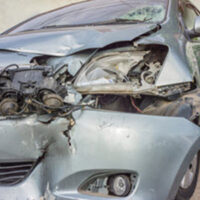How Event Data Recorders Can Help You Prove Fault

Motorists and their passengers who suffer serious injuries in car accidents are often entitled to damages compensating them for their losses. However, this is only possible for plaintiffs who can prove that someone else was at fault for their crash. This can be a difficult endeavor, especially in cases where the other party staunchly refuses to admit playing a part in a crash or there are no eyewitnesses or video recordings that can shed light on what caused the accident.
Fortunately, many newer vehicles come equipped with Event Data Recorders (EDRs), which save important driving data right up to the time of a crash. An experienced car accident lawyer will know how to fully investigate a claim by retrieving the data contained on EDRs, which in turn, can be used to reconstruct an accident, so if you sustained a serious injury in a Florida car crash, it is important to speak with an attorney who can begin working on your case right away.
What are EDRs?
Event Data Recorders, or EDRs, are electronic devices that usually come pre-installed in newer vehicles and are used to record technical vehicle and occupant information. In fact, EDRs are specifically set up to identify events that are closely linked to car accidents and then record those details. The most common triggering events are those that cause a sudden change in momentum or airbag deployment.
What Types of Information do EDRs Record?
When crash-related events trigger a vehicle’s EDR, the device will record certain information, including:
- Pre-collision vehicle dynamics;
- Pre-crash system status;
- Driver inputs;
- Vehicle crash signatures;
- Restraint usage or deployment status; and
- Post-crash data.
This data covers a wide array of information, some of which can be used to prove who was at fault for an accident, such as:
- The behavior of the occupants, including who had their seat belts engaged;
- How many people were in the vehicle at the time of the crash;
- How fast the vehicle was traveling prior to the crash;
- Whether a driver attempted to brake before an accident;
- Whether a driver attempted to swerve out of the way prior to the accident;
- Vehicle data, such as the angle, position, and speed of the car prior to the crash; and
- How fast another motorist was driving immediately before impact and how long it took that individual to brake.
All of this information can later be retrieved from a vehicle’s EDR and then used to help crash investigators create a sequence of events that can explain why a crash occurred.
Experienced Florida Car Accident Lawyers
Preserving the information on an EDR is often time sensitive, especially in cases where a vehicle is totaled and sold. In these cases, if liability is being disputed or if a claim has a particularly high value, it is important for the injured parties to take steps towards preserving EDR data. For help determining whether your own vehicle recorded information during your collision, please call 954-566-9919 and a Fort Lauderdale auto accident attorney at Boone & Davis will help you schedule a free case review with one of our dedicated attorneys.
Resource:
nhtsa.gov/research-data/event-data-recorder
https://www.booneanddavislaw.com/road-rage-a-growing-problem/
